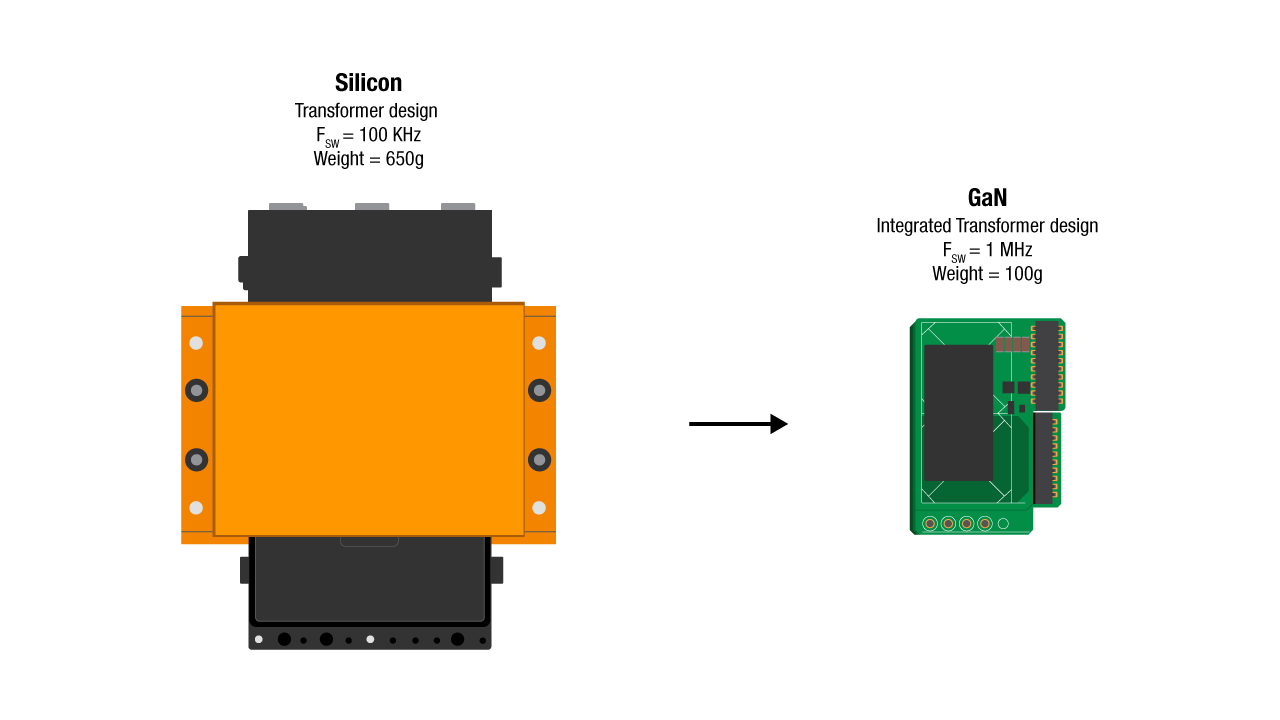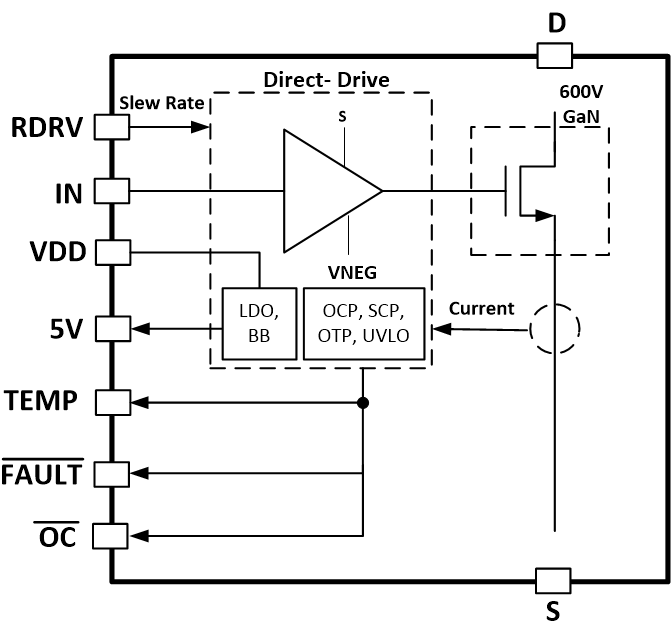SSZT226 november 2020 LMG3422R030 , LMG3422R050 , LMG3425R030 , LMG3425R050
Physics has caught up with silicon devices. The traditional workhorses of power supplies – metal-oxide semiconductor field-effect transistors (MOSFETs) and insulated gate bipolar transistors (IGBTs) – can only boost power density if you sacrifice efficiency, form factor and heat dissipation.
Enter gallium nitride (GaN) semiconductors, which can process power electronics faster and deliver power more efficiently for a growing number of high-voltage applications. GaN’s higher switching capabilities mean that it can convert higher levels of power more efficiently, with fewer components, as shown below in Figure 1. GaN semiconductors enable a new breed of power-supply and conversion systems in AC/DC power delivery applications, such as 5G telecom rectifiers and server computing. GaN is pushing the limits in new applications, and beginning to replace traditional silicon-based power solutions in automotive, industrial and renewable energy markets.
 Figure 1 Comparing the power density of
the magnetics of silicon designs vs. GaN designs
Figure 1 Comparing the power density of
the magnetics of silicon designs vs. GaN designsGaN FETs: new integration venues
 Figure 2 The integration of a 600-V GaN FET with a gate driver and short-circuit protection
Figure 2 The integration of a 600-V GaN FET with a gate driver and short-circuit protectionIn data centers and server farms, TI’s new GaN FETs enable simpler topologies, such as totem-pole power factor correction, which in turn lower conversion losses, simplify thermal design and lead to smaller heat sinks. These devices enable twice as much power density compared to silicon MOSFETs in the same-size 1U rack server while achieving 99% efficiency. This power-density and efficiency savings become especially important when considering long-term impacts. For example, let’s say that a server farm is increasing their AC/DC efficiency 3% each month by installing GaN devices. If that server farm that converts 30 kW of power daily, they would save more than 27 kW a month, which is roughly $2,000 monthly and $24,000 annually.
When a GaN FET is integrated with current-limiting and overtemperature detection, it can protect against shoot-through and thermal runaway events. Additionally, system interface signals enable self-monitoring capability.
Reliability is a crucial factor in power electronics. Therefore, compared with traditional cascade and stand-alone GaN FETs, a highly integrated GaN device can more effectively boost reliability and optimize the performance of high-voltage power supplies by integrating functional and protection features.
With an external driver, parasitic inductance can cause switching losses as well as ringing and reliability issues at high GaN frequencies. Common source inductance increases turnon losses significantly. Likewise, designing a robust overcurrent protection circuit at a high slew rate is difficult and costly. But GaN naturally lacks a body diode, which leads to less ringing on switch nodes and eliminates any reverse-recovery losses.
GaN devices with protection features
Unlike silicon MOSFETs, GaN conducts in the third quadrant in a “diode-like” manner and minimizes dead time by reducing the voltage drop. TI’s ideal diode mode in the LMG3425R030 and LMG3425R050 further minimizes losses in power delivery applications. Read the application note, “Maximizing the Performance of GaN with Ideal Diode Mode,” to learn more.
These GaN devices have gone through 40 million hours of device reliability testing, including accelerated and in-application hard-switch testing. The reliability tests occurred under highly accelerated switching conditions at maximum power, voltage and temperature environments.
Conclusion
While GaN is a game-changing technology for power electronics, it also demands thorough process and materials engineering. That calls for growing high-quality GaN crystal, optimizing the dielectric films and achieving very clean interfaces in the fabrication process. Masterful testing and packaging are also a must.